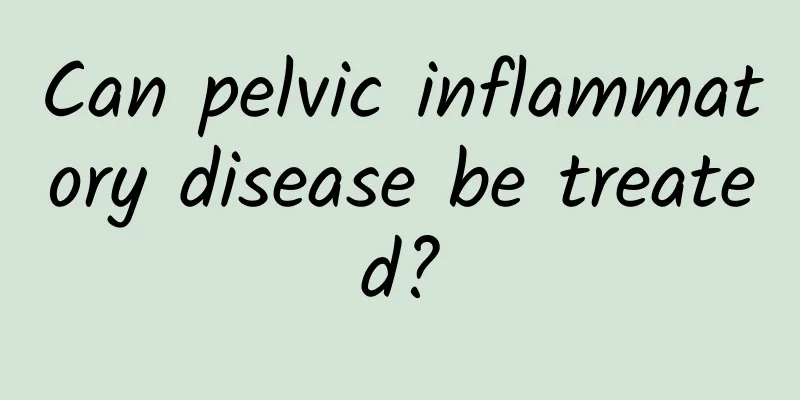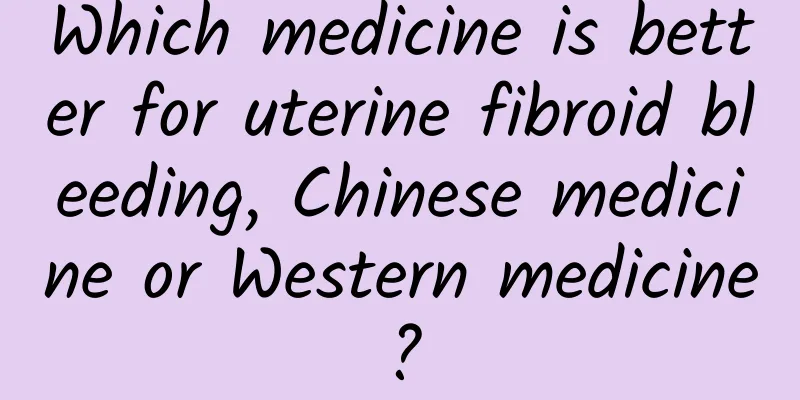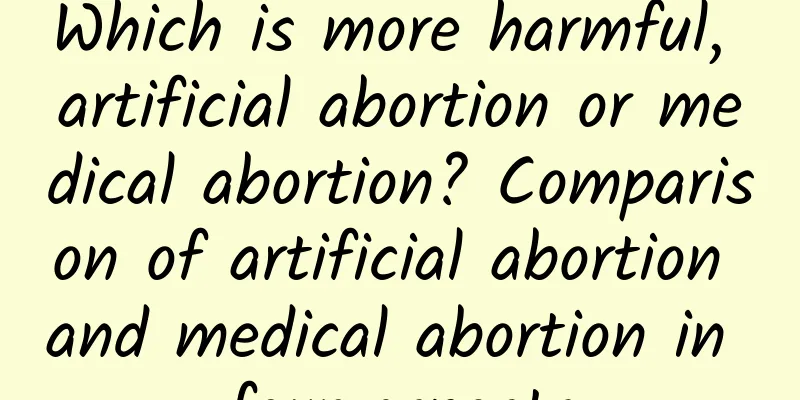Experts talk about the clinical manifestations of chronic pelvic inflammatory disease

|
Do you know the clinical manifestations of chronic pelvic inflammatory disease? Pelvic inflammatory disease is also a common gynecological disease, and knowing the clinical manifestations of chronic pelvic inflammatory disease is very helpful for the treatment of chronic pelvic inflammatory disease. So, what are the clinical manifestations of chronic pelvic inflammatory disease? The following is a detailed introduction to the clinical manifestations of chronic pelvic inflammatory disease. 1. Clinical manifestations of chronic pelvic inflammatory disease: abnormal menstruation : pelvic blood congestion can cause increased menstrual flow; ovarian dysfunction can cause menstrual disorders; endometritis often causes irregular menstruation, and senile endometritis may cause purulent and bloody secretions. 2. Systemic symptoms : Most of them are not obvious, sometimes only low fever and fatigue. Due to the long course of the disease, some patients may experience neurasthenia symptoms, and the clinical manifestations of chronic pelvic inflammatory disease include lack of energy, insomnia, and general discomfort. When the patient's resistance is poor, it is easy to have acute or subacute attacks. 3. Infertility and ectopic pregnancy : Fallopian tube adhesion and obstruction can cause infertility or ectopic pregnancy. The incidence of infertility after acute pelvic inflammatory disease is 20% to 30%. Literature reports that the risk of infertility after one pelvic inflammatory disease attack is 13%, 36% after two, and 60% to 75% after three. 4. Chronic pelvic pain : Chronic inflammation causes scar adhesion and pelvic congestion. The clinical manifestations of chronic pelvic inflammatory disease are often lower abdominal distension, pain and lumbar pain, which are often aggravated after fatigue, sexual intercourse and before and after menstruation. Literature reports that about 20% of acute pelvic inflammatory disease is left with chronic pelvic pain. 5. Physical signs : If it is endometritis, the uterus is enlarged and tender; if it is salpingitis, the fallopian tubes are thickened in a cord-like manner on one or both sides of the uterus, and there is mild tenderness; if it is hydrosalpinx or tubo-ovarian cysts, cystic tumors are felt on one or both sides of the pelvic cavity. The clinical manifestation of chronic pelvic inflammatory disease is limited movement; if it is pelvic connective tissue inflammation, the uterus is often tilted and retroflexed, with limited movement or adhesion and fixation, and there is flake-like thickening and tenderness on one or both sides of the uterus. The uterosacral ligaments are often thickened, hardened, and tender. The above is an introduction to the clinical manifestations of chronic pelvic inflammatory disease by experts. It is for your reference only. If you have the above clinical manifestations of chronic pelvic inflammatory disease, do not delay treatment. Please go to a regular hospital for treatment in time. In addition, if you have any questions about the clinical manifestations of chronic pelvic inflammatory disease, please consult online experts! Pelvic inflammatory disease http://www..com.cn/fuke/pqy/ |
<<: There are four methods for treating chronic cervicitis
>>: Do you know about massage therapy for dysmenorrhea treatment?
Recommend
Passion fruit girl! 1 in 3 people have a high body fat percentage
"A normal BMI value does not mean that you a...
How many times can you have a medical abortion? Learn more about it early
Women should protect their bodies and not get pre...
Intensely recommended! 6 Antioxidant Foods to Fight Obesity
Fighting obesity depends on antioxidant foods bec...
How to prevent cervical erosion in women? 7 ways to prevent cervical erosion
In daily life, cervical erosion is a gynecologica...
Can chemotherapy be used after surgery for cervical precancerous lesions?
There are many causes of cervical cancer in women...
What preparations should be made before artificial abortion
Artificial abortion refers to the termination of ...
Detailed explanation of the methods for treating dysmenorrhea
Dysmenorrhea is the most common symptom in women....
What are the common symptoms of pelvic inflammatory disease?
What are the common symptoms of pelvic inflammato...
Give birth to food banks! Housewives' Union: Learning from Japan's experience
Legislators from both parties promoted the creati...
What system abnormalities can cause irregular menstruation?
From the perspective of traditional Chinese medic...
What are the methods for treating cervical erosion?
Many women want to know how to treat cervical ero...
What are the hazards of female cervicitis and how to treat female cervicitis
Cervicitis is common in women of childbearing age...
What is the difference between endometriosis and adenomyosis?
The differences between endometriosis and adenomy...
Is seabuckthorn effective in treating female cervical erosion? Women should pay attention to these when treating cervical erosion
Is seabuckthorn effective in treating cervical er...
A must-eat for gaining muscle and losing fat! Nuts plus whey? Nutritionists teach you the general principles of supplementation before and after exercise, and eat the right nutrients
Sports nutrition has become increasingly popular ...









